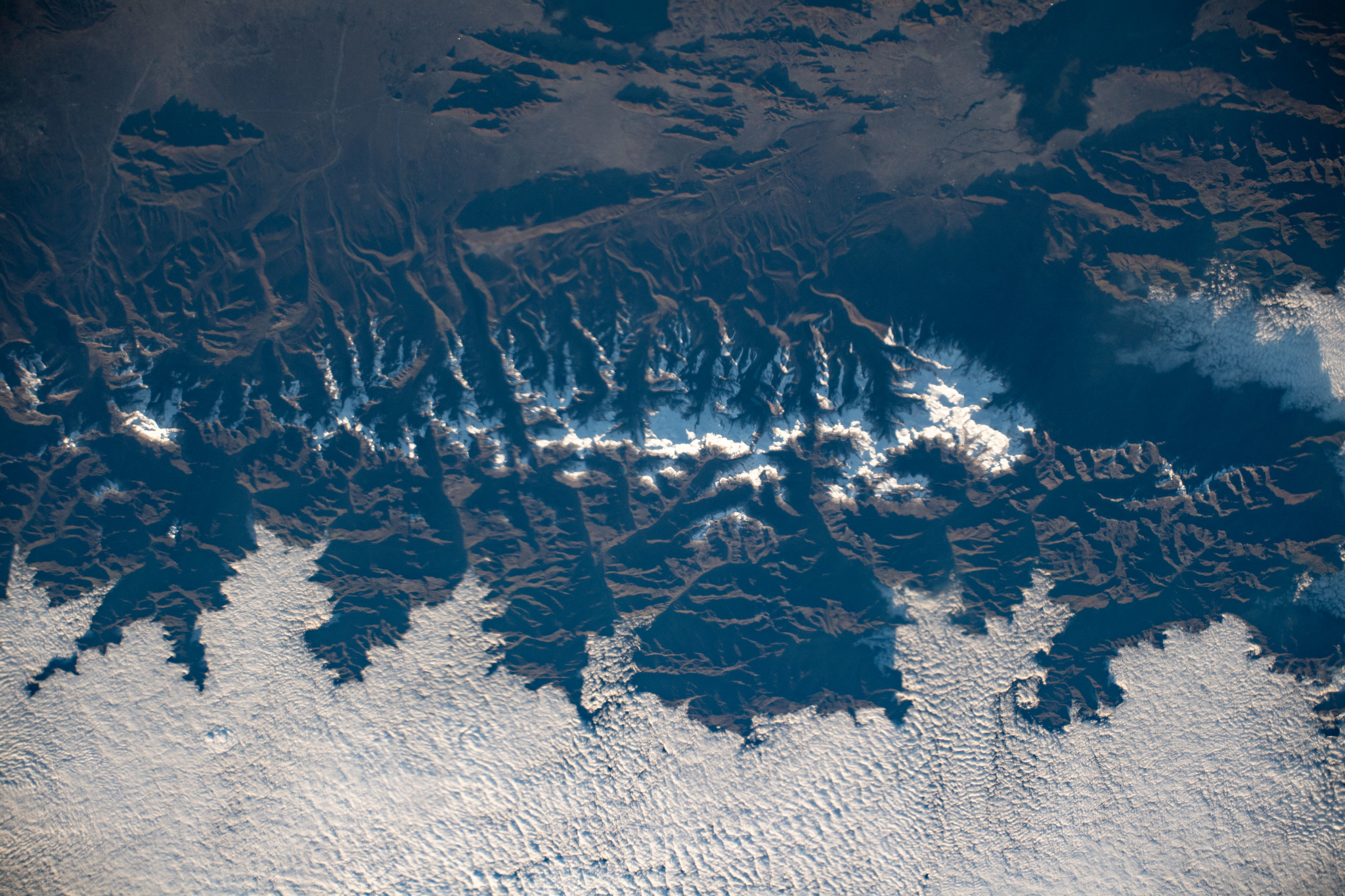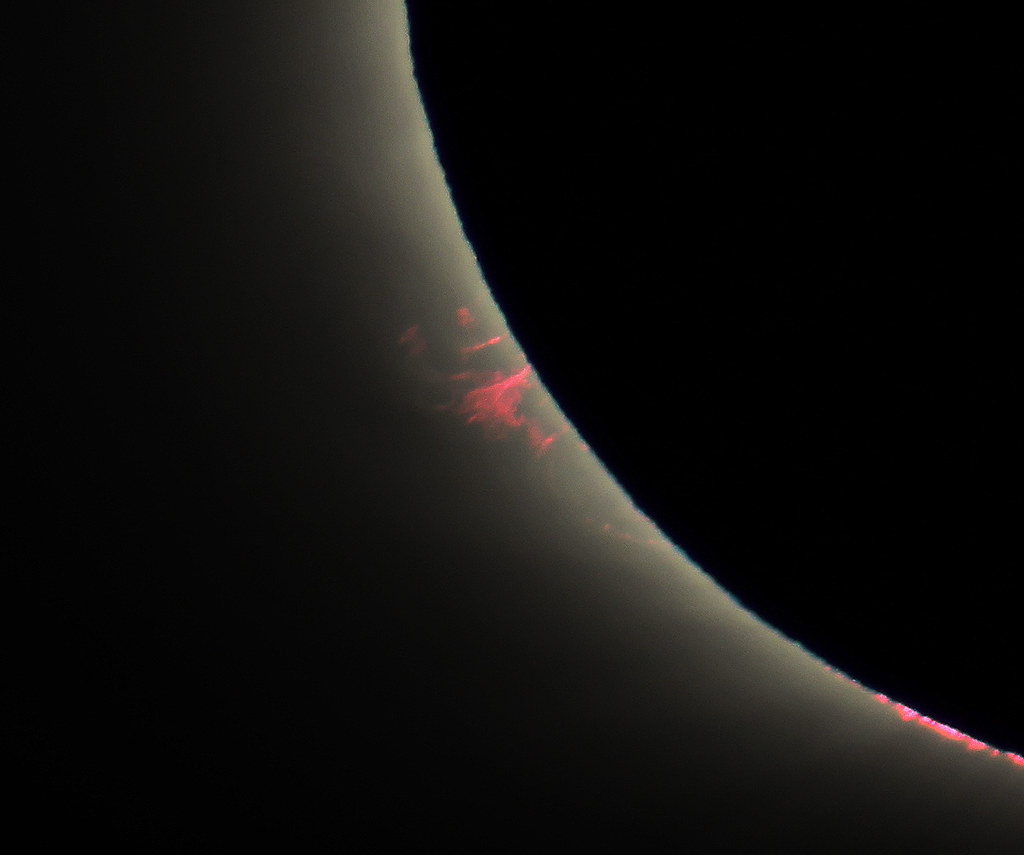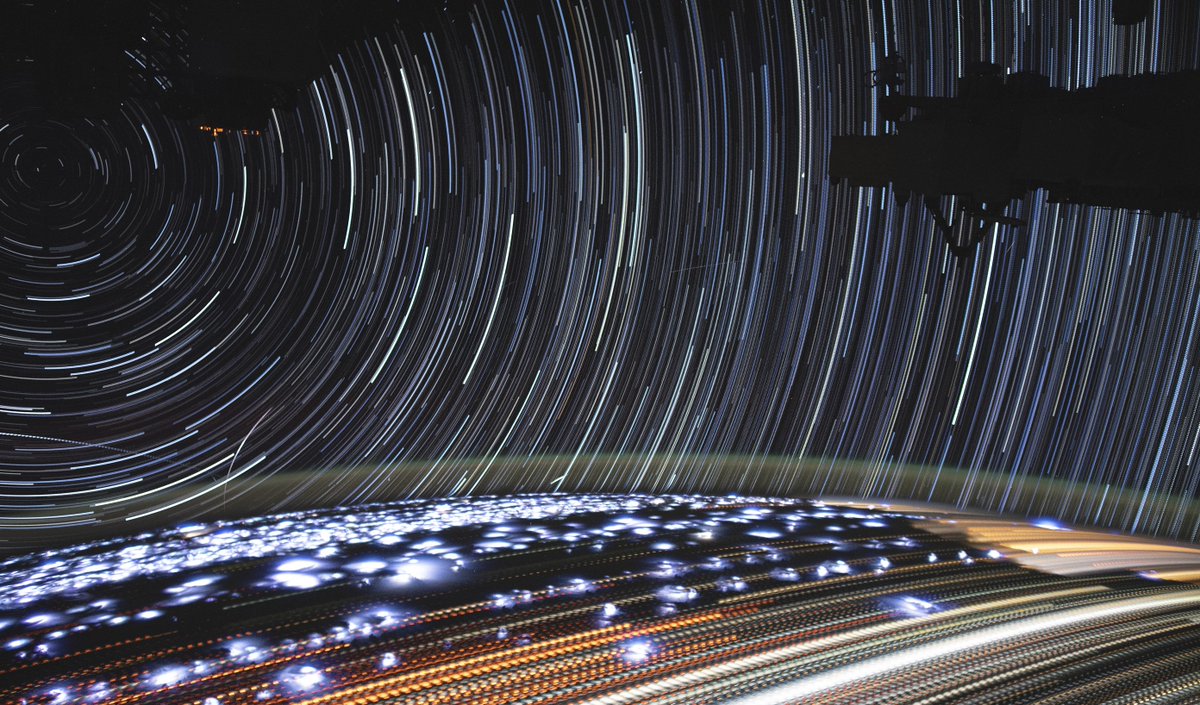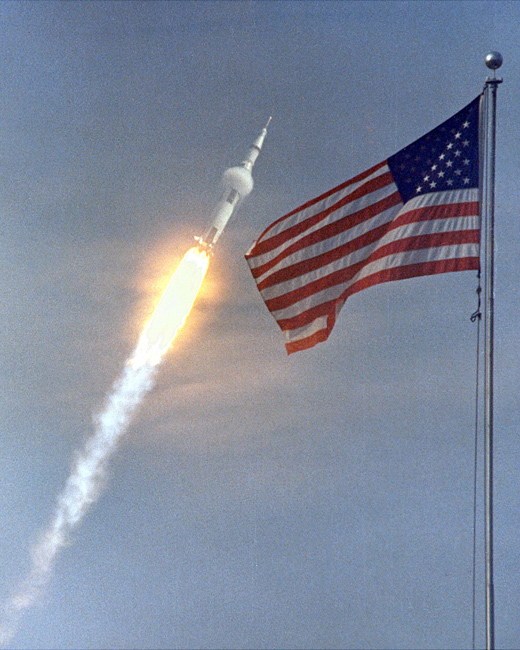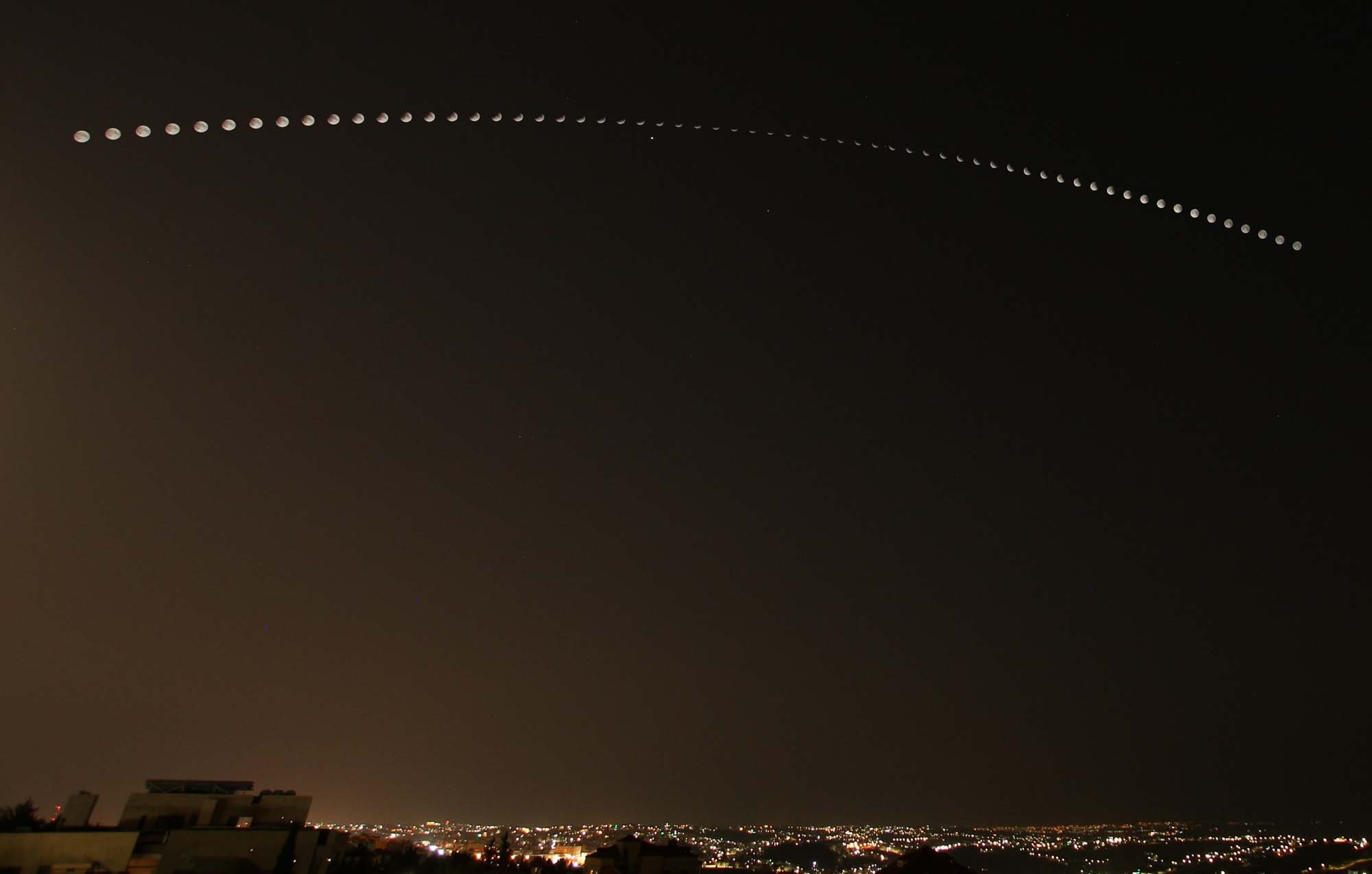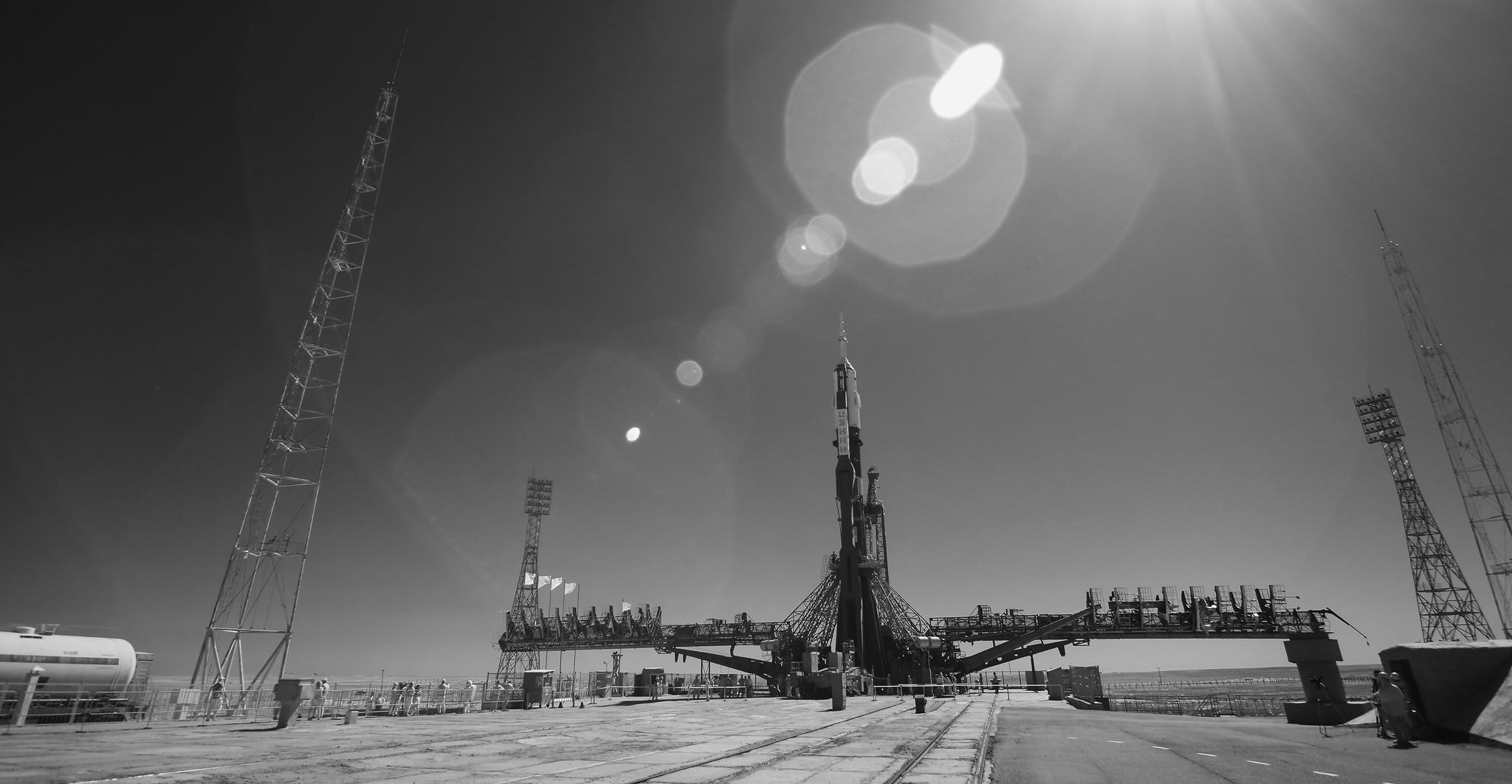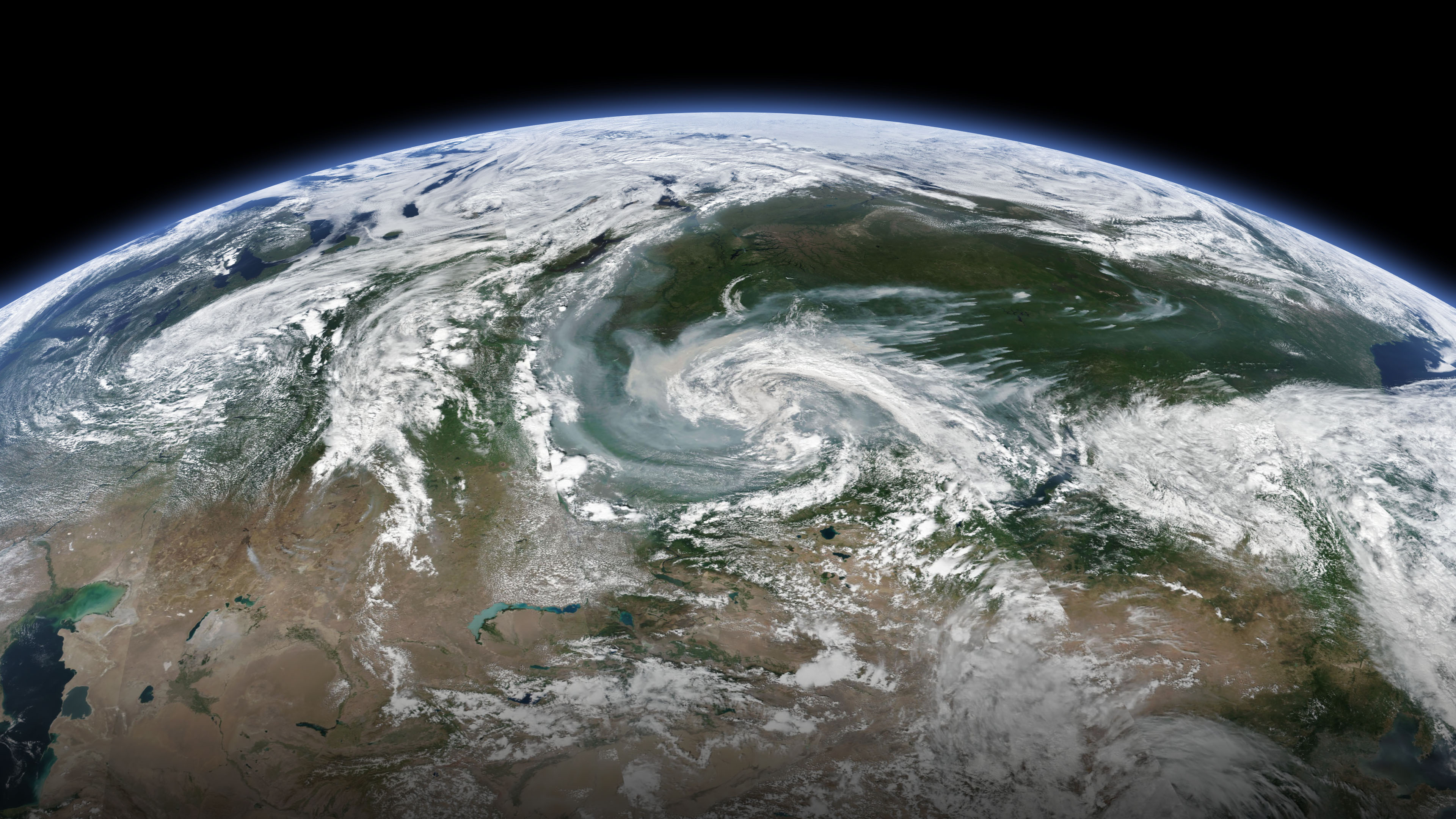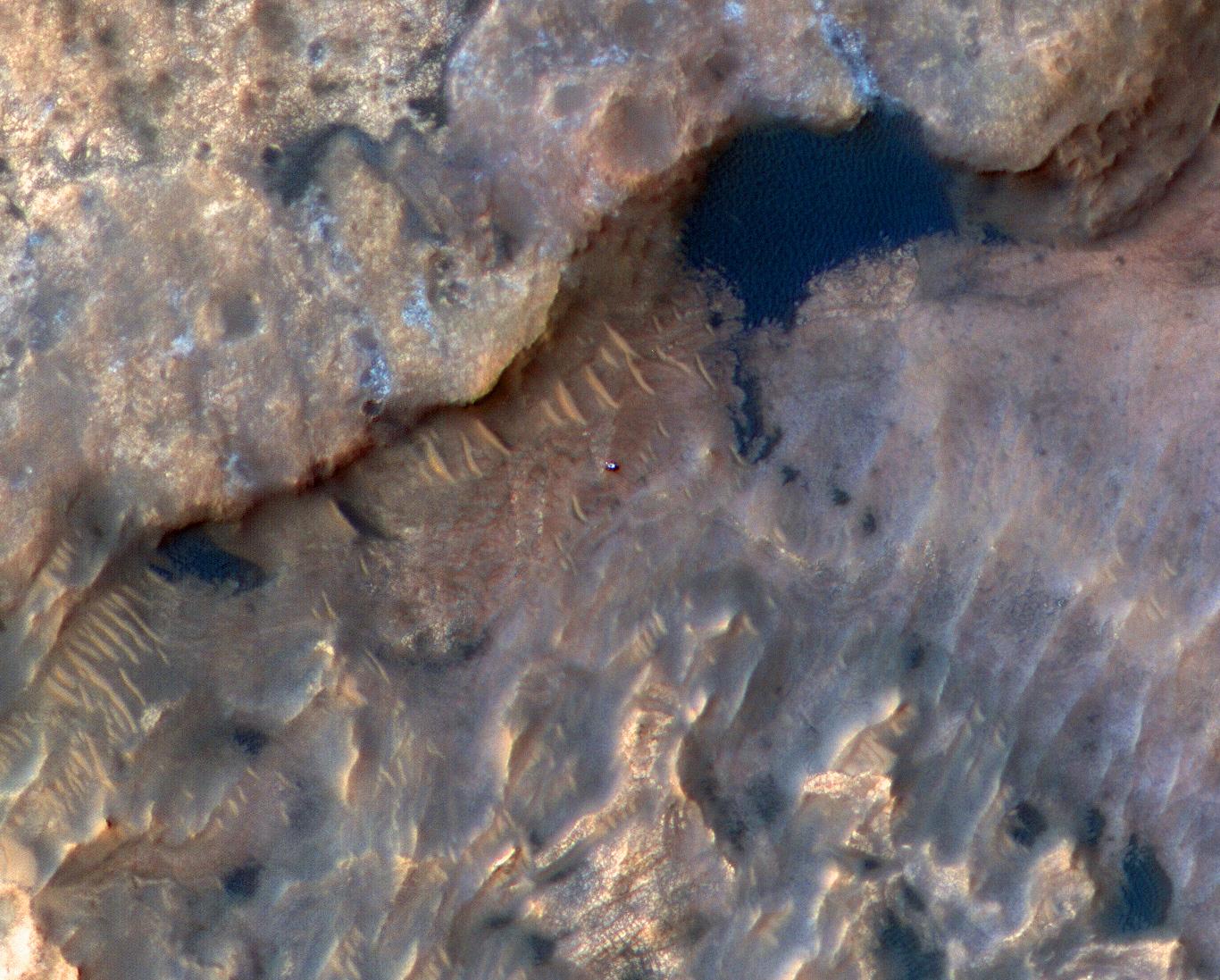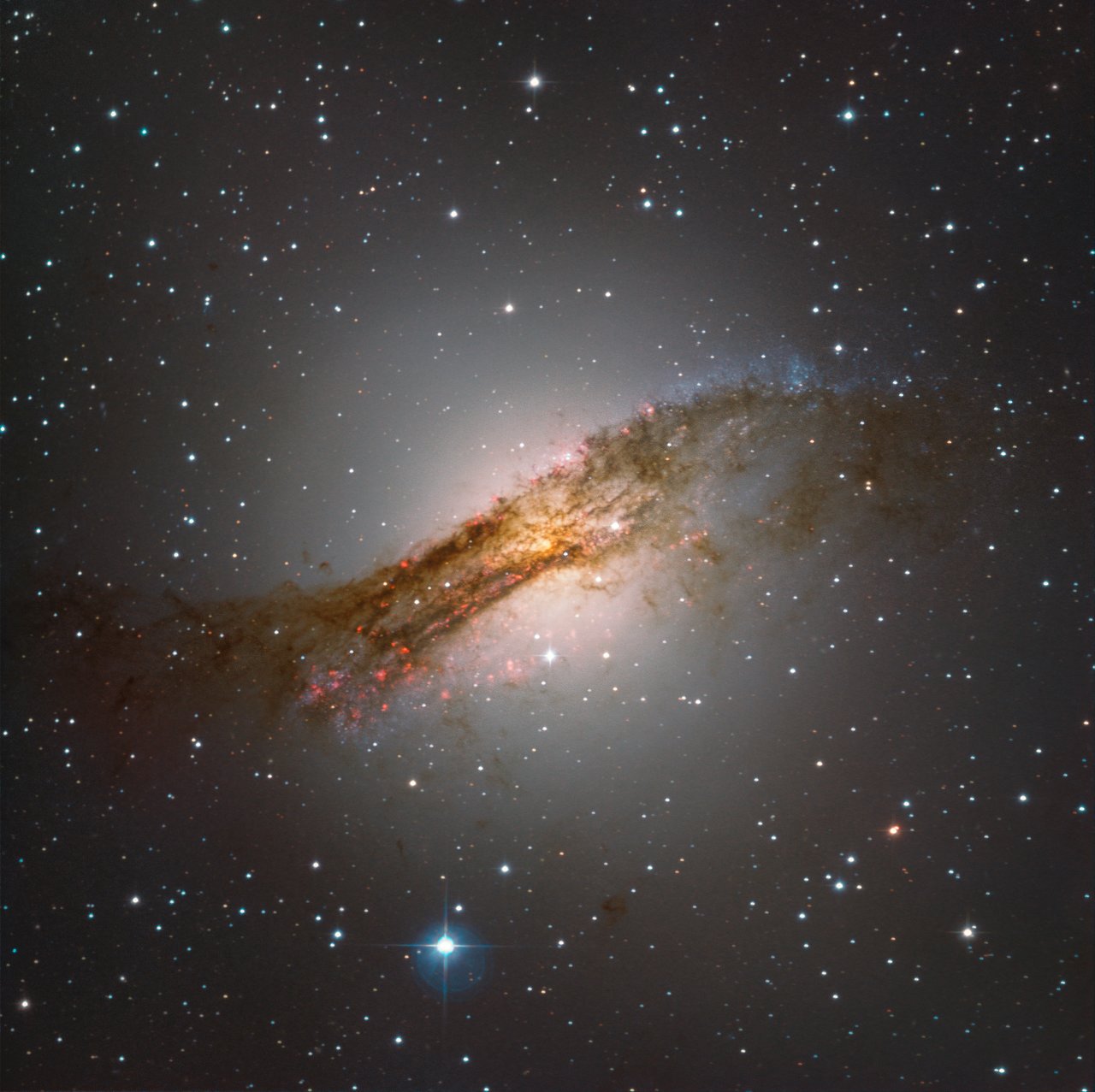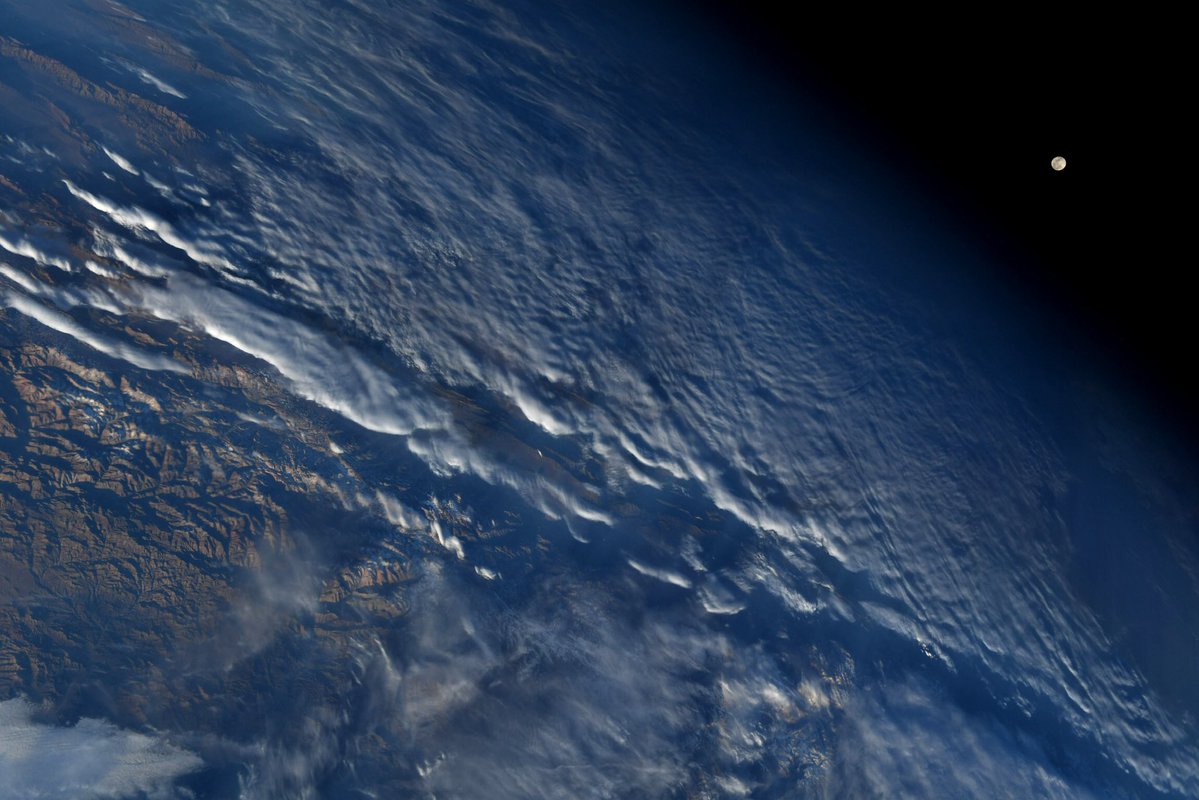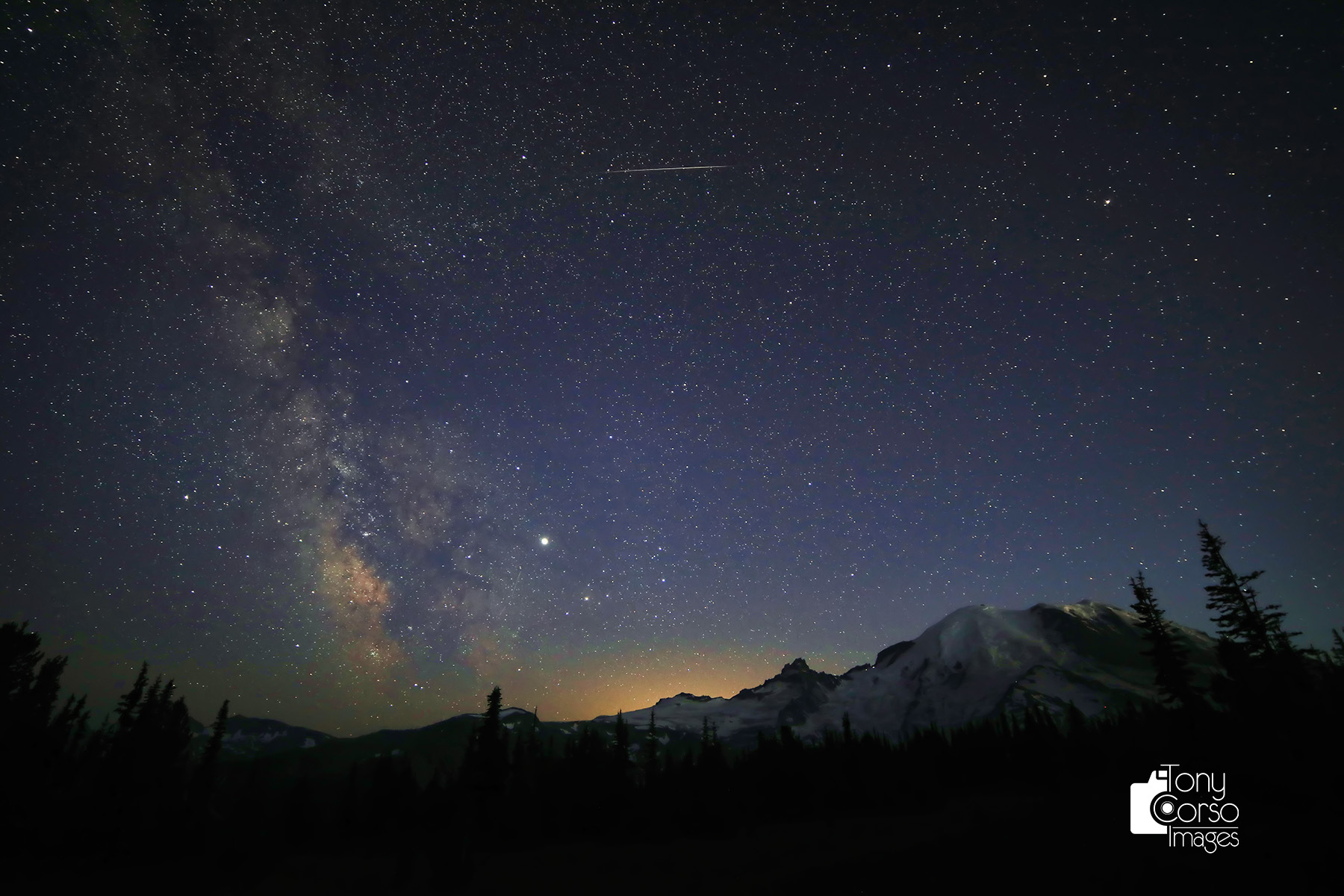Image of the Day 2019 Archive
Explore our Image of the Day 2019 Archives!
July 2019
Snow-Capped Mountains Seen from Space
Monday, July 1, 2019: A photo of Earth taken from the International Space Station reveals the frigid mountain tops of the Andes in South America. Tomorrow (July 2), a total solar eclipse will pass over this mountain range. Parts of Chile and Argentina will get to witness totality, when the moon blocks out the sun entirely, while the rest of South America can see a partial eclipse. — Hanneke Weitering
A total solar eclipse
Wednesday, July 3, 2019: A total solar eclipse darkens the sky above the La Silla Observatory in Chile in this aerial shot captured via drone during totality. Thousands of spectators had gathered at the observatory to see the eclipse. In the foreground are several of the telescopes that belong to the observatory, while the Andes Mountains provide a breathtaking backdrop. — Hanneke Weitering
Astronauts Celebrate Independence Day in Space
Thursday, July 4, 2019: Two NASA astronauts beamed home their holiday wishes from the International Space Station today (July 4). Christina Koch and Nick Hague are the only two Americans currently living off the planet. — Hanneke Weitering
The sun's corona
Friday, July 5, 2019: Details of the sun's brilliant corona come to light during the total solar eclipse of July 2 in this composite of polarized images captured from the European Southern Observatory's La Silla Observatory in Chile. The sun's corona, which is only visible during totality, can reveal information about magnetic activity on the surface of the sun. — Hanneke Weitering
Solar Prominences Appear at Totality
Monday, July 8, 2019: During the total solar eclipse last Tuesday (July 2), bright-pink solar prominences became visible around the sun's atmosphere as the moon blocked its bright surface from view. These prominences are made of tangled magnetic field lines that hold on to plasma in the sun's chromosphere, and the features can extend all the way out into the sun's corona. Prominences are only visible during a total solar eclipse, when the brightest part of the sun is blocked from view by Earth's moon. — Hanneke Weitering
NASA's Mobile Launcher Gets Soaked
Tuesday, July 9, 2019: An enormous burst of water gushes over Pad 39B at NASA's Kennedy Space Center in Florida during a water flow test at its new mobile launcher. The launch tower will support the upcoming flights of NASA's new Space Launch System megarocket for the first Artemis moon mission. About 400,000 gallons of water poured onto the mobile launcher during this test, which took place on July 2. — Hanneke Weitering
Airglow and the Moon
Tuesday, July 10, 2019: The moon lights up the star-filled night sky as an effect called "airglow" gives Earth's atmosphere a subtle green glow in this photo taken by an astronaut at the International Space Station. This green luminescence is the result of interactions between atmospheric particles and ultraviolet radiation coming from the sun. — Hanneke Weitering
Breaking space news, the latest updates on rocket launches, skywatching events and more!
ExoMars Rover Camera Meets Martian Meteorite
Thursday, July 11, 2019: The Close-Up Imager (CLUPI) camera set to launch on the European Space Agency's ExoMars rover in 2020 gets ready for its Mars mission by studying a Martian meteorite on Earth. Named "Exhibit 0102.226," the meteorite was discovered in Oman in 2001. Scientists at ESA's ESTEC technology center in the Netherlands loaned the space rock from the Natural History Museum in Bern, Switzerland, to calibrate the instrument before it goes to the Red Planet. — Hanneke Weitering
Lightning and Star Trails
Friday, July 12, 2019: A long-exposure photo of lightning storms seen from space makes Earth look like it's scattered with fluffy bits of dryer lint. Meanwhile, Earth's city lights streak across the land below, an effect caused by both the Earth's rotation and the swift orbit of the International Space Station, where NASA astronaut Christina Koch captured this image. In the background, star trails circle around Polaris, the North Star. — Hanneke Weitering
Apollo 11 Rocket Goes Supersonic
Tuesday, July 16, 2019: The Saturn V rocket carrying three Apollo 11 astronauts to the moon soars behind an American flag shortly after lifting off from Kennedy Space Center in Florida. As the rocket broke the sound barrier, a ring of vapor formed around the rocket's second stage. Today is the 50th anniversary of the launch of the Apollo 11 mission, which landed the first astronauts on the moon on July 20, 1969. — Hanneke Weitering
Washington Celebrates Apollo 11
Wednesday, July 17, 2019: A full-size projection of NASA's Saturn V rocket lit up the Washington Monument in honor of the 50th anniversary of the launch of the Apollo 11 moon mission yesterday (July 16). The Saturn V rocket, which launched the astronauts to the moon, was 363 feet (111 meters) tall, and its projection spans about two-thirds of the height of the 555-foot (169 m) Washington Monument. — Hanneke Weitering
Lunar Eclipse Over Jordan
Thursday, July 18, 2019: The full moon of July, also known as the Thunder Moon, passed through Earth's shadow Tuesday night into Wednesday morning (July 16-17). Astrophotographer Zaid Abbadi captured the partial lunar eclipse from Amman, Jordan, and created this composite image showing the moon's path across the sky as its surface gradually darkened in the Earth's shadow. — Hanneke Weitering
Soyuz Stands Ready for Launch
Friday, July 19, 2019: A Soyuz rocket that will launch three people to the International Space Station on the 50th anniversary of the Apollo 11 moon landing tomorrow (July 20) stands tall on the launchpad at the Baikonur Cosmodrome in Kazakhstan. NASA astronaut Andrew Morgan, Italian astronaut Luca Parmitano of the European Space Agency and Russian cosmonaut Aleksandr Skvortsov will lift off at 12:28 p.m. EDT (1628 GMT), kicking off a six-month mission as crewmembers of Expeditions 60 and 61. — Hanneke Weitering
Astronauts Approach the International Space Station
Monday, July 22, 2019: The Soyuz MS-13 spacecraft approaches the International Space Station carrying three new Expedition 60 crewmembers. NASA astronaut Drew Morgan, European Space Agency astronaut Luca Parmitano and Russian cosmonaut Aleksandr Skvortsov lifted off from the Baikonur Cosmodrome in Kazakhstan Saturday (July 20), on the 50th anniversary of the Apollo 11 moon landing, and arrived at the orbiting laboratory about six hours later. — Hanneke Weitering
Smoke Meets Storms Over Russia
Tuesday, July 23, 2019: Plumes of smoke from wildfires mix with a swirling storm system over Russia in this view from NASA's Earth Observatory. The natural-color image was created using data collected from the Visible Infrared Imaging Radiometer Suite (VIIRS) instrument on the Suomi NPP satellite on Monday (July 21). In the regions of Irkutsk, Krasnoyarsk and Buryatia, the largest wildfires had burned more than 500 square miles (1,300 square kilometers) by Tuesday, according to NASA. — Hanneke Weitering
Curiosity Rover Spotted from Space
Wednesday, July 24, 2019: Can you spot the rover in this photo of Mars? NASA's Mars Reconnaissance Orbiter (MRO) snapped this view of the Curiosity rover from space as it passed over a region known as "Woodland Bay." The rover is currently scaling a mountain called Aeolis Mons (also known as Mount Sharp), a 3-mile-high (5 kilometers) peak at the center of Gale Crater. MRO captured the image using its High Resolution Imaging Science Experiment (HiRISE) camera on May 31. — Hanneke Weitering
Milky Way Sparkles Over 'Quantum of Solace' Hotel
Thursday, July 25, 2019: The colorful core of the Milky Way sparkles above the European Southern Observatory's Residencia, a building featured in the James Bond film "Quantum of Solace" that was destroyed in a dramatic explosion (with the help of computer graphics, not real explosives). Residencia houses astronomers and other visitors at the Paranal Observatory in Chile, which is home to the Very Large Telescope Array and several other telescope facilities. — Hanneke Weitering
SpaceX Aces Another Landing
Friday, July 26, 2019: A SpaceX Falcon 9 rocket touches down on Landing Zone 1 at Cape Canaveral Air Force Station in Florida after launching a Dragon cargo spacecraft to the International Space Station. The rocket lifted off yesterday at 6:01 p.m. EDT (2201 GMT) and delivered the cargo craft into orbit before returning to Earth. More than 5,000 lbs. (2,268 kilograms) of crew supplies and science experiments were packed inside the Dragon, which is scheduled to arrive at the space station on Saturday. — Hanneke Weitering
SPECULOOS Spots a Strange Galaxy
Monday, July 29, 2019: The oddly shaped galaxy Centaurus A glistens in deep space in this view from the European Space Agency's new SPECULOOS observatory in Chile. This was one of the "first light" images from SPECULOOS (which stands for "Search for habitable Planets EClipsing ULtra-cOOl Stars"). Centaurus A, also known as NGC 5128, is one of the brightest objects in the night sky of the Southern Hemisphere. It's located 11 million light-years from Earth in the constellation of Centaurus. Astronomers believe that Centaurus A was once an elliptical galaxy that collided with a small spiral galaxy, and that this collision is responsible for the galaxy's irregular shape. — Hanneke Weitering
Moon Plays 'Peekaboo' with Earth
Tuesday, July 30, 2019: Good morning from the International Space Station! NASA astronaut Nick Hague tweeted this photo of a nearly-full moon setting behind the Earth as a fluffy sheet of clouds covers the land below. A few snow-capped mountains can be seen through a break in the clouds to the bottom right of the image. (Hague did not specify which mountain range is in the photo.) — Hanneke Weitering
Meteor Over Mount Rainier
Wednesday, July 31, 2019: A meteor, Jupiter and the Milky Way galaxy light up the night sky above the snow-capped Mount Rainier in Washington state in this stunning image by astrophotographer Tony Corso. He captured the photo during the peaks of two dueling meteor showers, the Southern Delta Aquariids and the Alpha Capricornids on July 29. — Hanneke Weitering
Can't find the date you're looking for? It may have been a weekend or holiday, when we don't normally update our Image of the Day.
Click 'NEXT PAGE' below for August >

Space.com is the premier source of space exploration, innovation and astronomy news, chronicling (and celebrating) humanity's ongoing expansion across the final frontier. Originally founded in 1999, Space.com is, and always has been, the passion of writers and editors who are space fans and also trained journalists. Our current news team consists of Editor-in-Chief Tariq Malik; Editor Hanneke Weitering, Senior Space Writer Mike Wall; Senior Writer Meghan Bartels; Senior Writer Chelsea Gohd, Senior Writer Tereza Pultarova and Staff Writer Alexander Cox, focusing on e-commerce. Senior Producer Steve Spaleta oversees our space videos, with Diana Whitcroft as our Social Media Editor.
